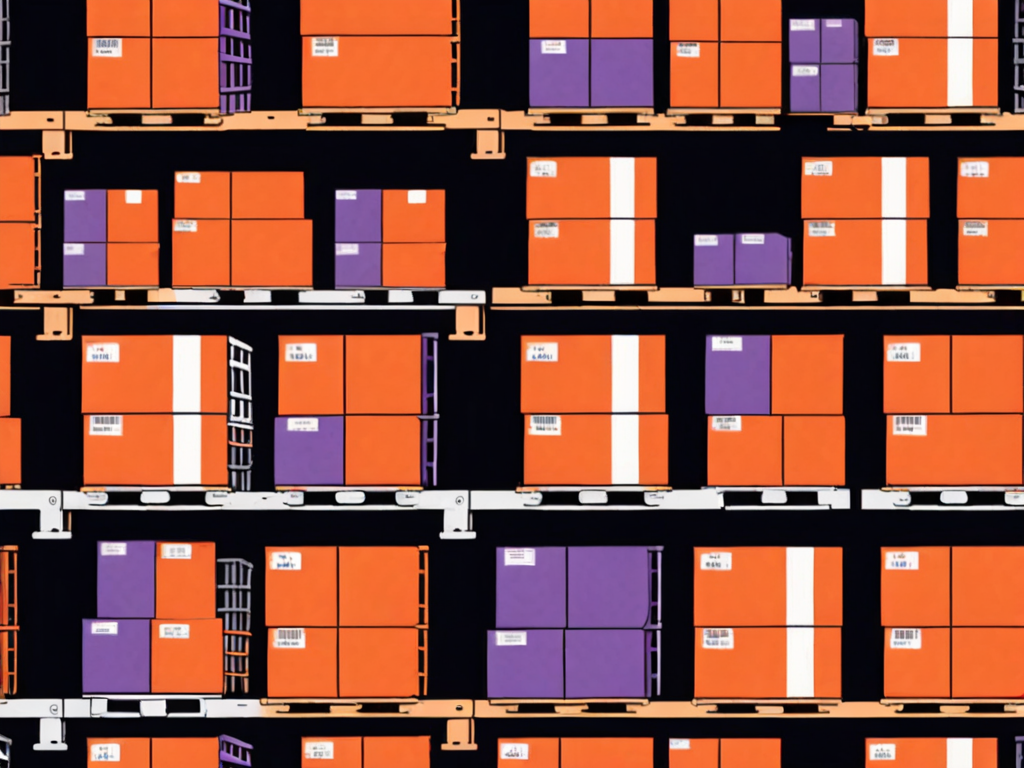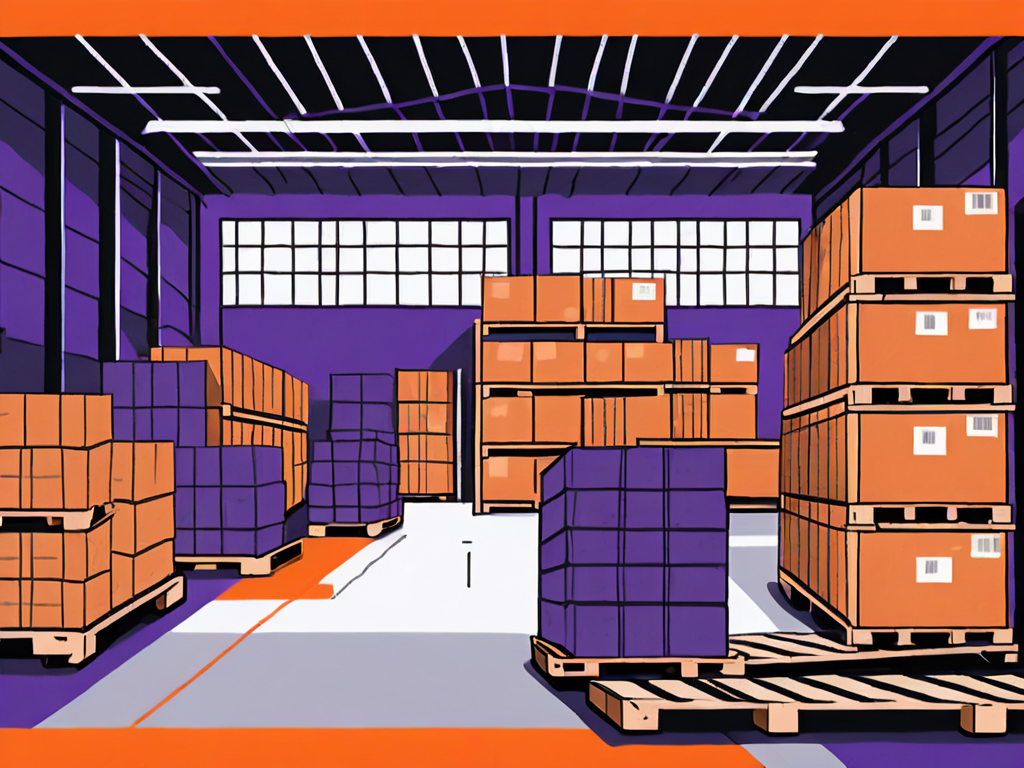Did you know that the use of pallets revolutionized the shipping industry? Palletization, also known as unit load or pallet packing, is a technique that involves loading goods onto a pallet as a single unit, providing numerous benefits in shipping.
From improved efficiency to reduced costs, palletization has become a fundamental practice for businesses worldwide.
So let’s take a look at what is palletization and some of its benefits in shipping, as it will help you optimize their logistics and reduce costs. In this article, we will explore:
- The definition and benefits of palletization in shipping
- How palletization enhances safety standards
- Palletization and its environmental effects
Table of Contents
ToggleComprehensive Guide to Palletization and Some of Its Shipping Benefits
Understanding palletization and some of its shipping benefits is key to optimizing your logistics and ensuring efficient cargo handling.

The Basics of Palletization
In palletization, the goods are arranged in a stable manner on the pallet, maximizing space utilization. This ensures that each pallet carries a significant quantity of products, minimizing the number of trips required for shipping. It also protects the goods from damage during transportation, as they are tightly secured to prevent movement and potential collisions.
Moreover, palletization plays a crucial role in standardizing shipping processes across industries. By using pallets of uniform sizes, companies can streamline their supply chain operations and enhance compatibility with various modes of transportation. This standardization not only improves efficiency but also reduces the risk of errors and delays in the shipping process.
Key Benefits of Palletization
The benefits of palletization go beyond improved efficiency and streamlined processes. Let’s explore some of the key advantages:
Improving Warehouse Organization
Palletization creates a structured and organized warehouse environment. Goods are neatly organized on pallets, making inventory management more straightforward. It enableseasy access to individual items, promoting faster order fulfillment and reducing the time spent searching for products within the warehouse.
Furthermore, the systematic arrangement of pallets in a warehouse allows for better space utilization. By stacking pallets vertically, businesses can make the most of their warehouse’s vertical space, maximizing storage capacity. This vertical storage approach not only increases the overall storage capacity but also enhances the efficiency of inventory tracking and stock rotation.
Enhancing Load Stability
One of the primary concerns in shipping is load stability. Palletization ensures that goods are tightly secured, preventing any movement or shifting during transportation. This stability reduces the risk of damage to the goods and minimizes the chances of accidents or injuries caused by improperly secured loads.
In addition to preventing damage during transit, the use of pallets with standardized dimensions also facilitates the use of forklifts and other material handling equipment. This compatibility ensures safe and efficient loading and unloading processes, further enhancing the overall safety and stability of the supply chain operations.
Reducing Shipping Costs
Cost reduction is a significant driving force behind the use of palletization. By maximizing the use of space within transportation vehicles, businesses can transport more goods in a single trip, minimizing the number of shipments required. This consolidation leads to:
- Lower shipping costs
- Improved route optimization
- Reduced fuel consumption
Moreover, the uniformity of pallet sizes allows for efficient cubing of transport vehicles, optimizing the use of available space. This optimization not only reduces transportation costs but also contributes to environmental sustainability by minimizing carbon emissions per unit of transported goods. By embracing palletization, businesses can achieve cost savings while promoting eco-friendly practices in their supply chain operations.
The Role of Palletization in Shipping
Palletization plays a crucial role in optimizing the shipping process, benefiting both manufacturers and logistics companies. Let’s explore how:
Palletization in the Logistics Chain
In the intricate web of the supply chain, palletization acts as a linchpin connecting various stakeholders. By consolidating goods onto pallets, manufacturers can streamline the handling of products, making it easier for logistics companies to transport and distribute the goods to their destinations efficiently. This unity of palletization ensures a smooth flow of goods throughout the logistics chain.
Impact on Shipping Efficiency
Efficiency is the golden word in shipping. With palletization, loading and unloading processes become faster and more efficient. The use of forklifts, pallet jacks, or other equipment simplifies handling, reducing the manpower required and saving valuable time. Additionally, palletized goods can be stacked higher, utilizing vertical space in warehouses and transportation vehicles more effectively.
Environmental Benefits of Palletization
Aside from the operational advantages, palletization also brings environmental benefits to the shipping industry. By standardizing the size and shape of loads, pallets help maximize space utilization in trucks and containers, reducing the number of trips required to transport goods. This optimization leads to lower fuel consumption and carbon emissions, contributing to a greener and more sustainable supply chain.
Technological Advancements in Palletization
Advancements in technology have revolutionized palletization techniques. Automated palletizing systems now exist, capable of arranging products on pallets with precision and speed. These systems use sensors and algorithms to optimize load distribution, ensuring stability during transit. Furthermore, RFID (Radio-Frequency Identification) tags are being integrated into pallets to:
- Enable real-time tracking and monitoring of shipments
- Enhance visibility
- Secure the shipping process
Safety Aspects of Palletization
The safety of goods and workers is of paramount importance in shipping. Palletization offers several safety benefits:

Protecting Goods during Transit
Palletization acts as a safeguard for goods during transit. By tightly securing the items to the pallet, they are less susceptible to damage caused by rough handling or collisions. This reduces the risk of product loss and ensures that goods arrive at their destination in optimal condition.
Minimizing Worker Injuries
Palletization promotes worker safety by reducing the need for manual handling. This is possible with the aid of handling equipment, such as:
- Forklifts or pallet jacks
- The risk of strains
- Sprains
- Other injuries associated with heavy lifting
This improves the overall well-being of workers and reduces the likelihood of workplace accidents.
Efficient Use of Warehouse Space
Another advantage of palletization is the efficient use of warehouse space. By stacking goods on pallets, vertical storage is maximized, allowing warehouses to store a larger quantity of goods in a smaller footprint. This not only increases storage capacity but also enhances inventory management by facilitating easier tracking and organization of products.
Facilitating Loading and Unloading Processes
Palletization streamlines the loading and unloading processes in warehouses and during transportation. Standardized pallet sizes enable quick and easy movement of goods using material handling equipment, reducing the time required for these tasks. This efficiency not only speeds up operations but also minimizes the chances of errors or delays in the supply chain.
Environmental Impact of Palletization
Palletization not only benefits businesses but also contributes to sustainable shipping practices. Here’s how:
Reducing Packaging Waste
Palletization reduces the need for excessive packaging materials. By consolidating goods onto pallets, businesses can minimize the use of individual cartons or boxes, reducing the overall packaging waste. This eco-friendly practice promotes sustainability and helps in preserving the environment.
Promoting Sustainable Practices in Shipping
As businesses increasingly embrace sustainability, palletization aligns with the goal of reducing the carbon footprint of shipping operations. By optimizing cargo space and reducing the number of trips required, palletization helps decrease fuel consumption and associated greenhouse gas emissions. This contributes to a greener and more environmentally conscious shipping industry.
As we’ve explored, palletization plays a crucial role in the shipping industry, offering numerous benefits such as:
- Improved efficiency
- Enhanced safety
- Environmental sustainability
By effectively utilizing pallets, businesses can optimize their operations, reduce costs, and contribute to a more sustainable future. So, the next time you receive a shipment, take a moment to appreciate the hidden power of palletization.
Enhanced Supply Chain Efficiency
One of the key advantages of palletization is the enhanced efficiency it brings to the supply chain. By standardizing the size and shape of goods on pallets, companies can streamline the loading and unloading processes, leading to faster turnaround times and reduced labor costs. This efficiency not only benefits the businesses involved but also contributes to a smoother flow of goods throughout the entire supply chain network.
Facilitating Automation in Warehousing
Another significant impact of palletization is its role in facilitating automation within warehouses. Palletized goods are easier to handle and move using machinery such as forklifts and automated conveyor systems. This automation not only increases the speed and accuracy of warehouse operations but also improves overall safety by reducing manual handling risks. By embracing palletization, companies can modernize their warehousing processes and stay competitive in today’s fast-paced business environment.
Take Full Control of Your Shipping Efficiency with Palletization Strategies
Palletization is a powerful tool that can revolutionize your shipping and logistics processes. By understanding and implementing palletization techniques, businesses can achieve improved efficiency, reduced costs, enhanced safety, and environmental sustainability.
Embrace the benefits of palletization to optimize your operations, ensure the safe transport of goods, and contribute to a more streamlined and eco-friendly supply chain.






